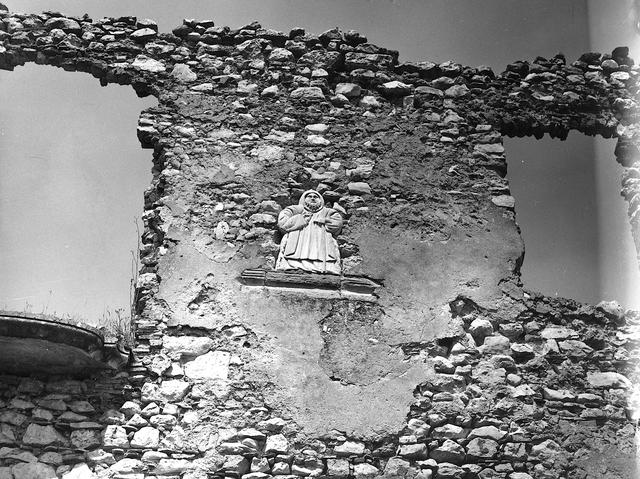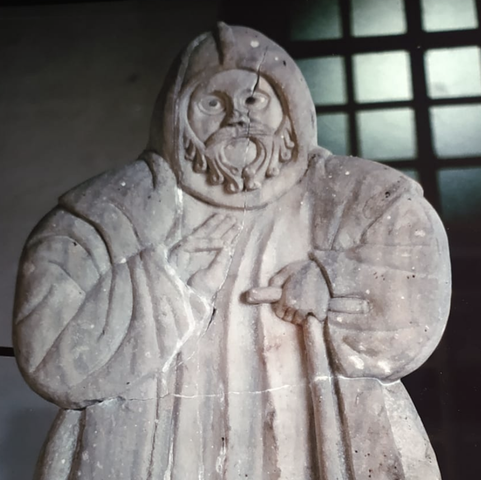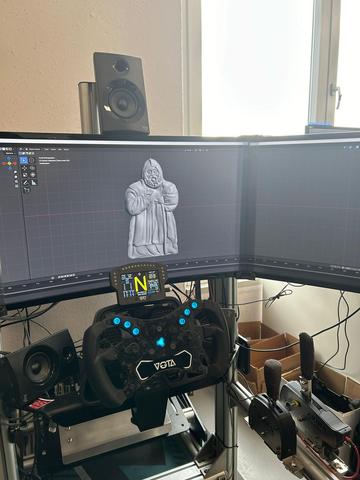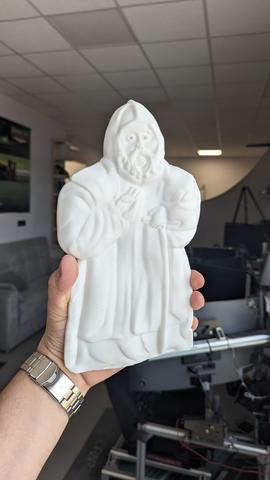The bas-relief sculpture, dating back to the 13th century, made of local limestone, 90 cm high, 50 cm wide, and approximately 12 cm deep, was stolen from the Abbey of Goleto in 1990. It depicts one of the few existing images of the Saint. Some photos show it embedded in the entrance facade of the Abbey, about 4 meters above the access pathway. After the 1980 earthquake, removed from the walls, it was exhibited in a mobile restoration workshop set up at the Abbey during those years. Subsequently, during the rst restoration campaign around 1985-1990, it was stolen. To this day, it has not been found again. The piece typically represents 13th-century art, very at, to the point of looking like a bas-relief.
The author of the sculpture is thought to be Maestro Orso, a skilled artisan and sculptor from the rst half of the 12th century. The artist did not reject the Byzantine sculptural tradition, especially evident in the xed gaze. The rst hints of a new artistic sensibility can be found in the slight movement of the saint’s habit. With this artwork, the author wanted to represent San Guglielmo of Vercelli, founder of the Abbey of Goleto, a magni cent 12th-century monastery located in Irpinia, near the sources of the Ofanto River. In 2024, the Irpinia-based startup 3D RAP, headquartered in Mercogliano Av, with the collaboration of the Irpinia 7X Association and the Academy of Fine Arts of Naples, used the few available photographs and 3D printing technology Polymodelling to reconstruct the slab in its original dimensions with special polymers. www.3drap.it With its recent placement in the museum area, we encourage the visitors to pay attention to the object and thus help its eventual recovery.
Help me return to Goleto
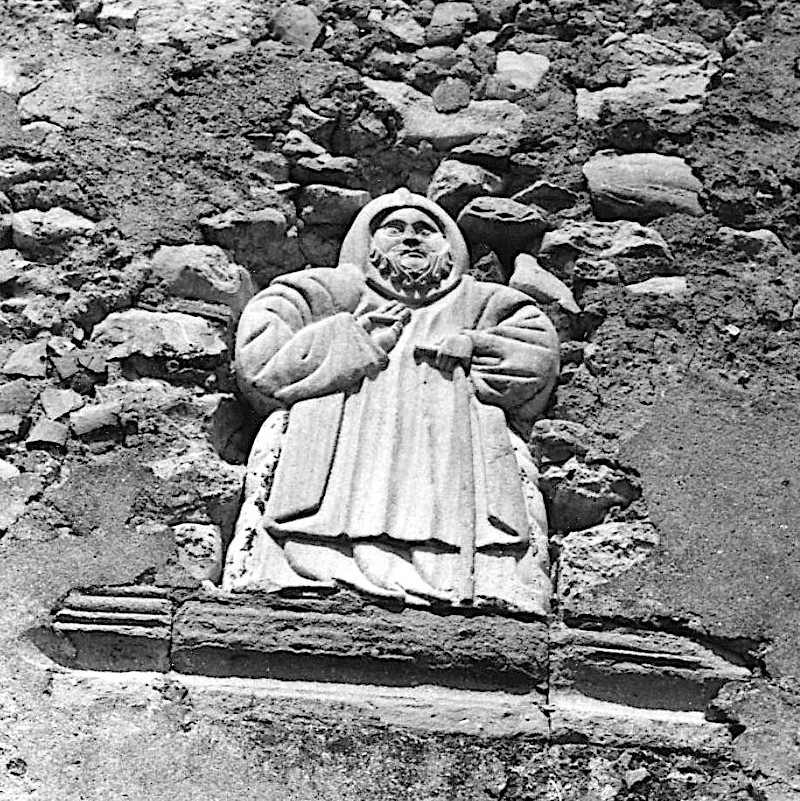 Bas-relief on the façade of the Abbey
Bas-relief on the façade of the Abbey
The 3D Reconstruction Process
The aim of this project was to return to the Irpinian community the historic medieval sculpture of San Guglielmo, an important work of art and a significant cultural symbol. This achievement was made possible through the collaboration between the Irpinia 7X association, the Academy of Fine Arts of Naples, and the company 3DRap.
Methodology
Phase 1: Initial Study
From the outset, the project presented numerous challenges, primarily due to the scarcity of available photographs of the original sculpture. To overcome this obstacle, I devoted time to a careful study of the shadows and the few existing images to achieve an accurate three-dimensional reproduction of the sculpture. This phase was crucial for better understanding the forms and proportions of the work.
Phase 2: Testing and Experimentation
During this phase, I conducted various tests to determine the most effective working method. After several attempts, I chose to use the Polymodelling technique, which allowed me to achieve a result as close as possible to the original. Particular attention was paid to the mesh topology to avoid complications during the 3D printing stage.
Phase 3: Preparation for 3D Printing
This phase required a detailed study of the model to identify the best cutting scheme necessary to fit it within the printing bed dimensions. Precision in this phase was essential to ensure that each part of the sculpture could be printed correctly and subsequently assembled without difficulty.
Collaboration and Support
This project would not have been possible without the support of the Academy of Fine Arts of Naples. In particular, I would like to thank Professor Nello Antonio Valentino, who was contacted by Mario Marciano of the Irpinia 7X Association to initiate and propose this work. I created the 3D model and prepared it for printing, while the company 3DRAP handled the physical production of the sculpture, printing it with special polymers.
Personal Reflections
Working on this project allowed me to develop new technical and artistic skills and gave me the opportunity to contribute to the preservation of the cultural heritage of the Irpinian community. The challenge of reproducing a medieval sculpture with modern tools was both stimulating and rewarding, teaching me the importance of precision and patience in the creative process. I am grateful to the Academy of Fine Arts of Naples, Professor Nello Antonio Valentino, and the Irpinia 7X Association for the opportunity, and to 3DRAP for their valuable collaboration in the sculpture’s production.
(From the report by the author, Metta Borriello)
